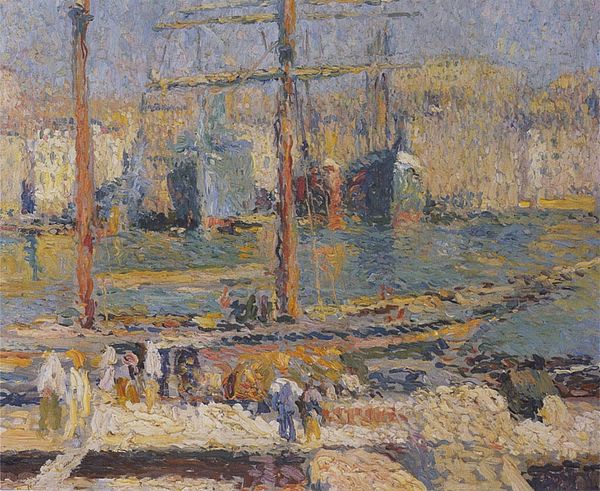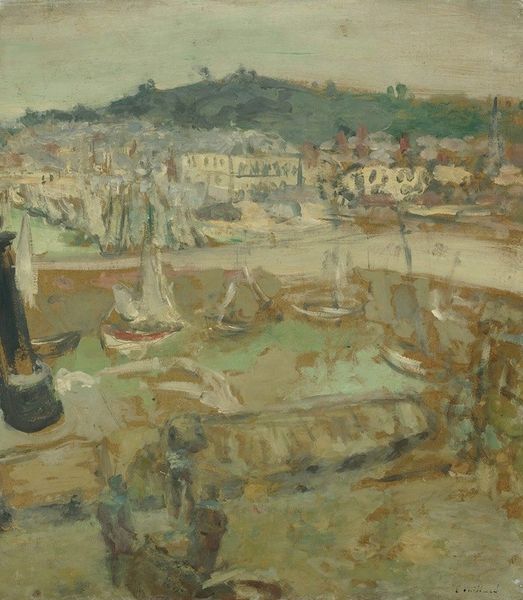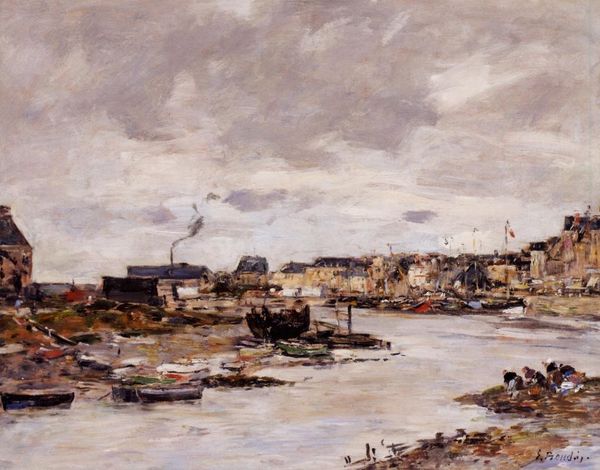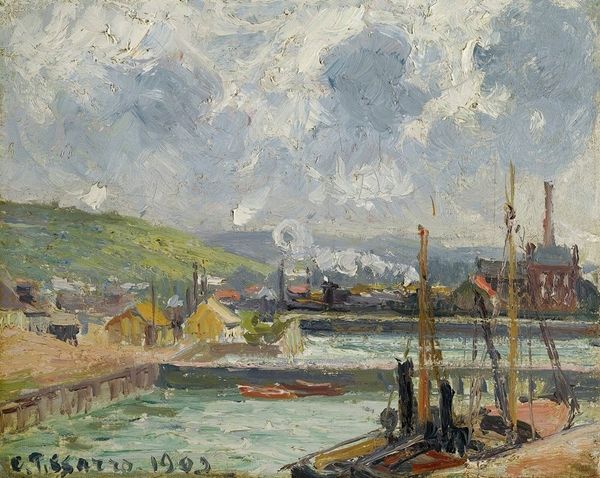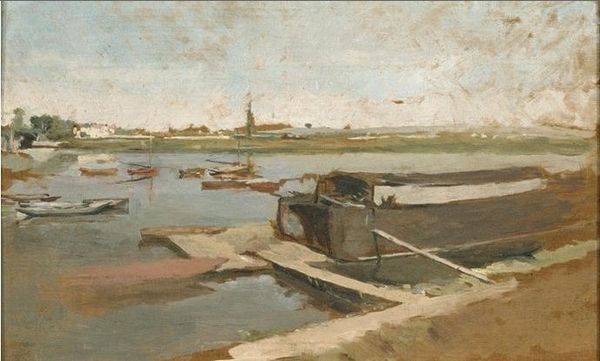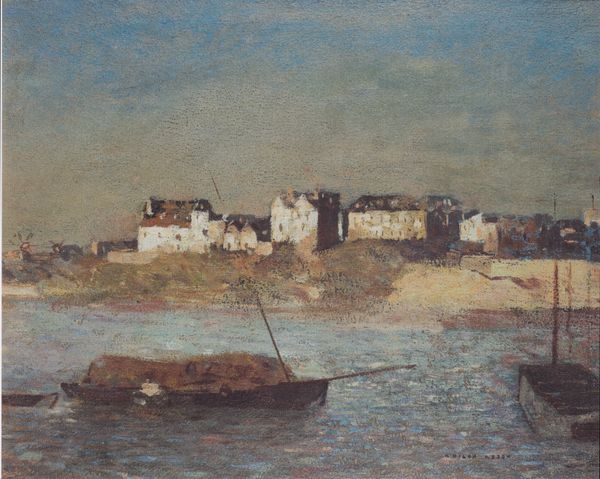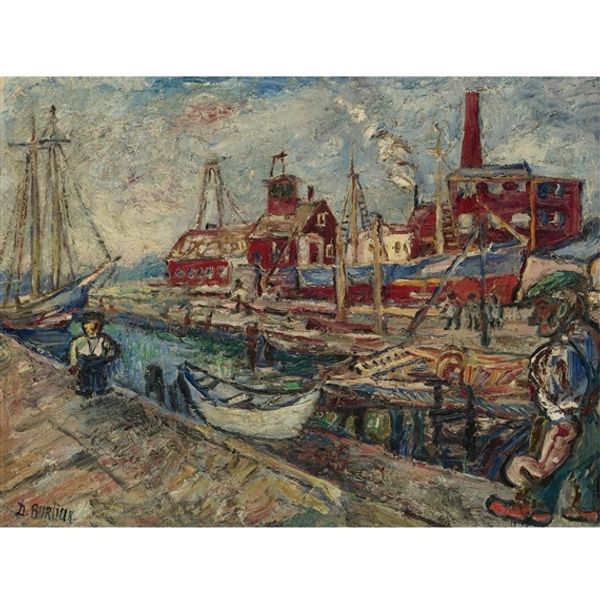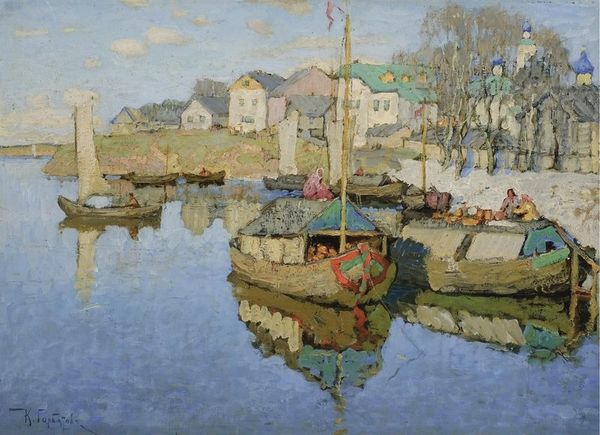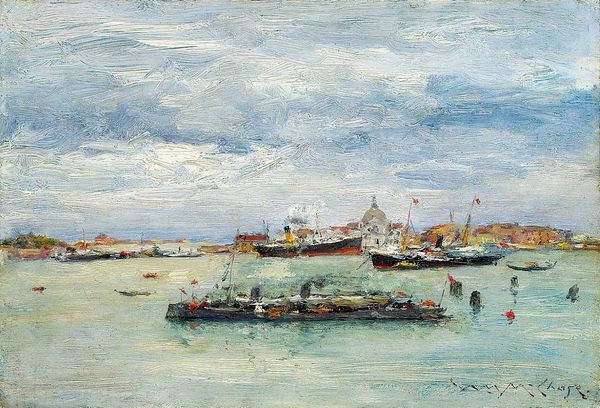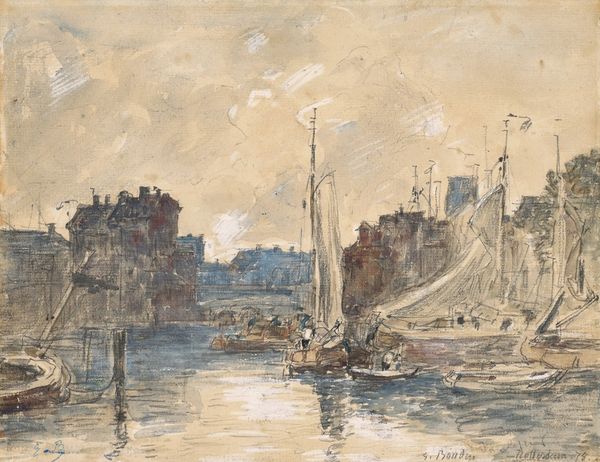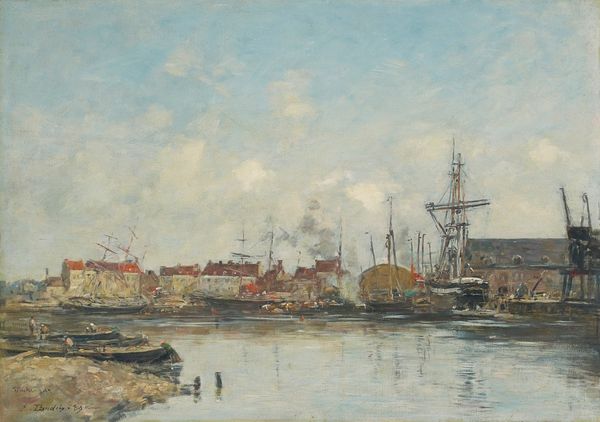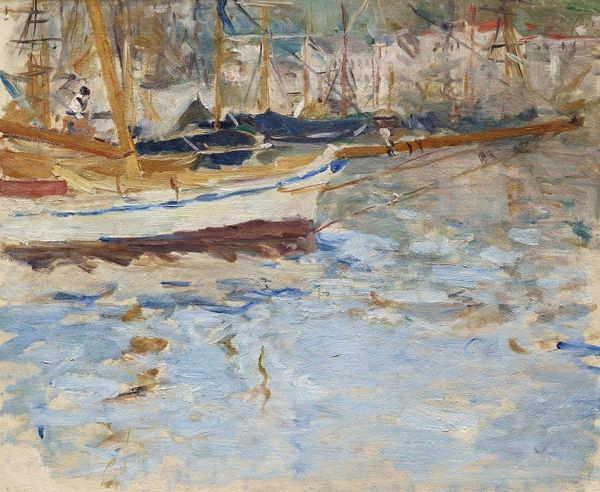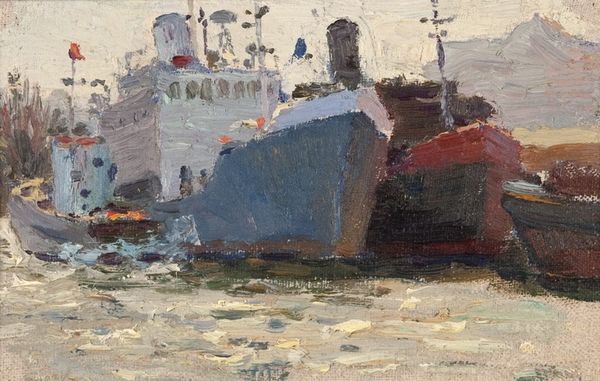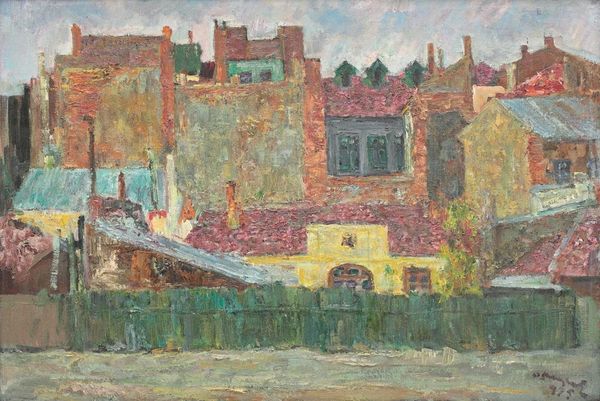
Copyright: Public domain
Editor: So this is Konstantin Gorbatov's "Evening in the Harbor" from 1915, created with oil paint. It has such a quiet, almost hazy feel. What social and historical narratives do you see at play in this depiction of a harbor scene? Curator: I think we need to situate this work within its historical context. 1915 was a pivotal year, amidst the throes of World War I. While seemingly apolitical, this scene might subtly evoke the realities of war. Notice how the muted color palette and somewhat desolate harbor suggest a society under duress. How do the buildings and their reflection strike you? Editor: They almost seem to blend together. The buildings, the boats, the water – everything is tied together by the color, creating an almost melancholic, uniform look. Curator: Precisely. The blending speaks to a sense of unity but also potentially a loss of individual identity. How does that uniformity contrast with the small human figures scattered around? Consider the workers: are they active participants, or simply background elements in a scene controlled by larger forces? Editor: I see your point. The figures almost blend into the background. Maybe Gorbatov is subtly commenting on the role of the individual within the larger machine of society during wartime? Were harbor scenes often romanticized, or did they depict more truthful, work-centered narratives? Curator: Historically, harbor scenes could function both ways, romanticized views as well as honest depictions. Here, Gorbatov opts for a nuanced approach. The beauty is undeniable, yet it is tinged with a quiet sadness. How does viewing it now, knowing its historical moment, impact your reading? Editor: It definitely makes me consider what isn't immediately apparent. The quietness feels less serene now and more like a loaded silence. It really highlights how art can serve as a mirror reflecting broader societal anxieties. Curator: Exactly. And through considering those connections, we move closer to grasping its full complexity and its potential significance in relation to current discourses on conflict and collective trauma.
Comments
No comments
Be the first to comment and join the conversation on the ultimate creative platform.
